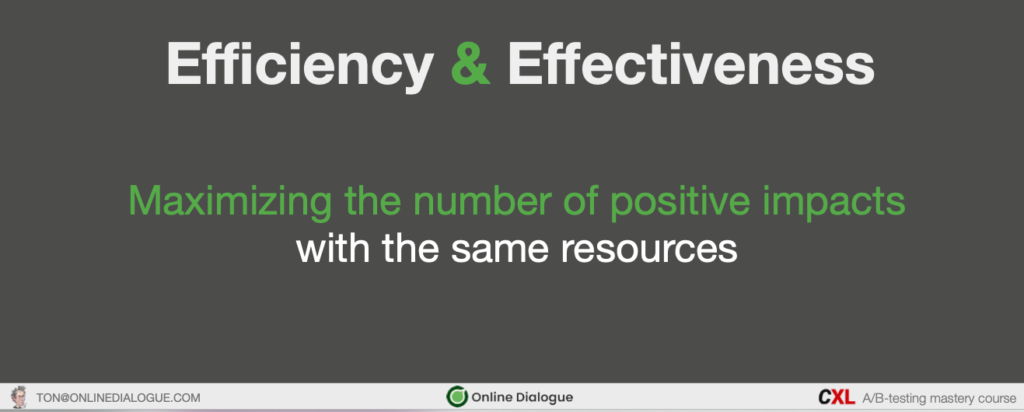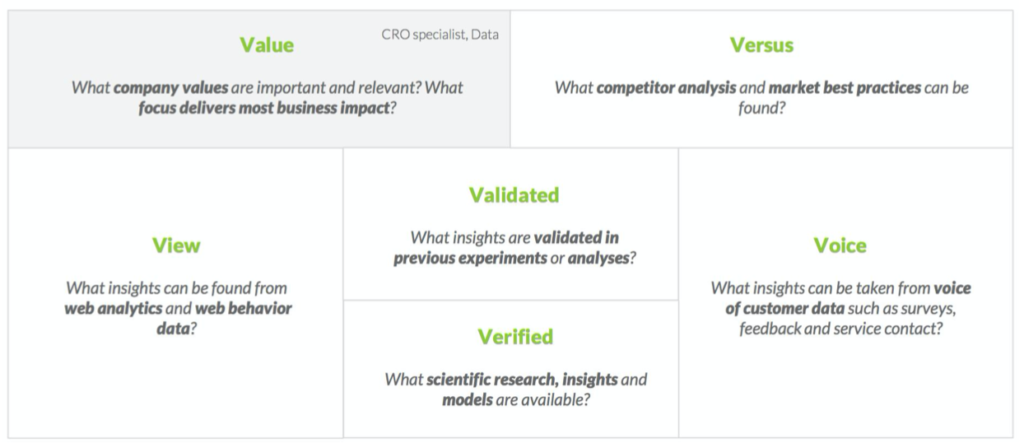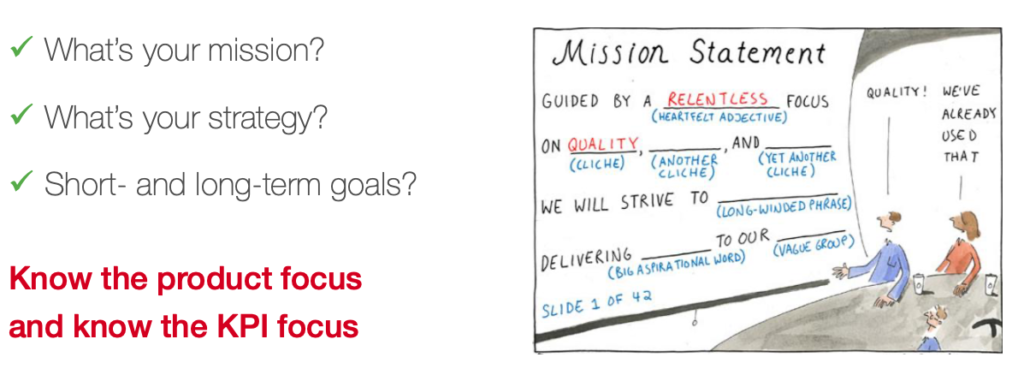This is the eighth in a series of articles on growth hacking, which I’m going deep into with a minidegree in Growth Marketing from the CXL Institute. Read more: What is growth hacking? | How to run a successful growth marketing experiment in six steps | This is the successful formula for A/B testing mastery| This one mindset will make you a better marketer
***
Optimization is all about efficiency. When you optimize, you are making things more efficient. You’re getting more out of the same resources by improving how they’re used or allocated.
But that’s only part of optimization. It’s also about effectiveness. As you make things more efficient, you also want to make them more effective. When you increase both efficiency and effectiveness, you fully unleash the power of optimization by not just streamlining (efficiency) but also amplifying (effectiveness).

For most of us, efficiency is the easy part. We’re great at the tweaking and fiddling that can unlock a few percentage points of improvement. It takes much more thought and experimentation to figure out the most effective way to use our resources.
That’s why I really like the 6V Conversion Canvas: It’s a clear framework for uncovering the information necessary to be most effective in your optimization efforts.
The 6V Conversion Canvas
In conversion optimization, success is pretty much correlated with research. The better you are at doing the dusk research upfront, before you start experimenting, the more likely it is that you will run effective experiments — which just also happens to be more efficient, as your waste less time and be more effective.
The 6V Conversion Canvas is a framework for desk research. It guides you through the six steps of gathering information and building a knowledge base to draw on for your conversion experiments. Even if you’ve been doing conversion optimization for a long time, the simplicity and structure of the 6V Canvas keeps you on track.

How to use the 6V Conversion Canvas
From the beginning, you need to do the research right so that you don’t waste time on experiments that don’t work because they’re built on faulty assumptions and bad data.
At the start of a new conversion optimization project, open the canvas and start at the top left. You’ll follow each prompt to help you surface useful information and valuable insights. To really excel at the research phase, think like a detective!
1. Value
First, you dive into the company values that are most important and relevant to the project. You want to carefully consider what would be most impactful to the business. This is where your understanding of the current parties comes in handy. At this stage, the objective is to be sure that your chores and projects can help the business of cheap it’s near term goals, rather than distracted.

2. Versus
The next step is to do a thorough competitor analysis. It’s quite possible that this information already exists internally. Even so, you want to be sure that you have a clear understanding of who the competition is and what they stand for. In fact, it’s almost always advisable to purchase from all of your competitors so you can experience what it’s like to be a customer.

To get a complete picture of your competition you’ll also want to:
- look for any important audience overlaps
- see how they are adapting and adjusting their own user experience by tracking their changes using tool like visualping or wachete
- Learn what tools are using via built with.
3. View
At this stage, you’ll dive into your web analytics and get to know the behavior of your visitors.
Ask yourself questions like: where visitors again on your side, where they come from, what their journey is, and how they act on the most important pages. You’ll also want to explore any differences between segments or products, all of which can provide useful information for building effective conversion experiments.
Key areas to explore:
- Traffic sources
- Landing pages
- Customer journeys across key segments, products and landing pages
- Time on page
- Scroll depth
- Heat maps
After a thorough analysis, translate these insights into specific behavioral segments that track through your typical flow. These are essential, as you will be matching specific segments to each experiment.
4. Voice
You have some of the most useful information internally. Mainly, all of your customer service communications. Speak with everyone that you can, anyone that interacts directly with customers. That could be anyone from customer service reps to salespeople. Those that are closest to the customer or valuable resources direct, real-time insight into your customers.
For instance, your sales team will have a list of common objections that can help you prioritize experiments. These insights can also inform your information architecture so that you rank information in a way that directly addresses pressing problems.
Other treasure troves include social media feedback, website chat logs, user research, and interviews with actual customers.
5. Verified
Now it’s time to nerd out. A major part of successful conversion optimization is understanding the psychology behind human behavior. You always want to have a reason why you’re running a test and why are you expect there to be a result. Remember: hypothesis building that is at the core of growth marketing experiments. And strong hypotheses are based on science and not just internal data.

6. Validated
Nearly there! It’s so easy to run out of steam at this point. Just put in a little more effort to validate what you’ve learned so far through the lens of previous tests.
Pull up your experiment tracker and review your past tests to see if there is anything you can learn from them. More often than not, a quick refresher will prompt learnings that can make your next round of tests better.

***
Of course, this process is much longer than a block us. And not every experiment will require a lengthy research process. However, it’s best practice to pull up the canvas for each round of experiments. Things change quickly, especially at start ups. You’ll likely uncover fresh insights by going through this process regularly!






